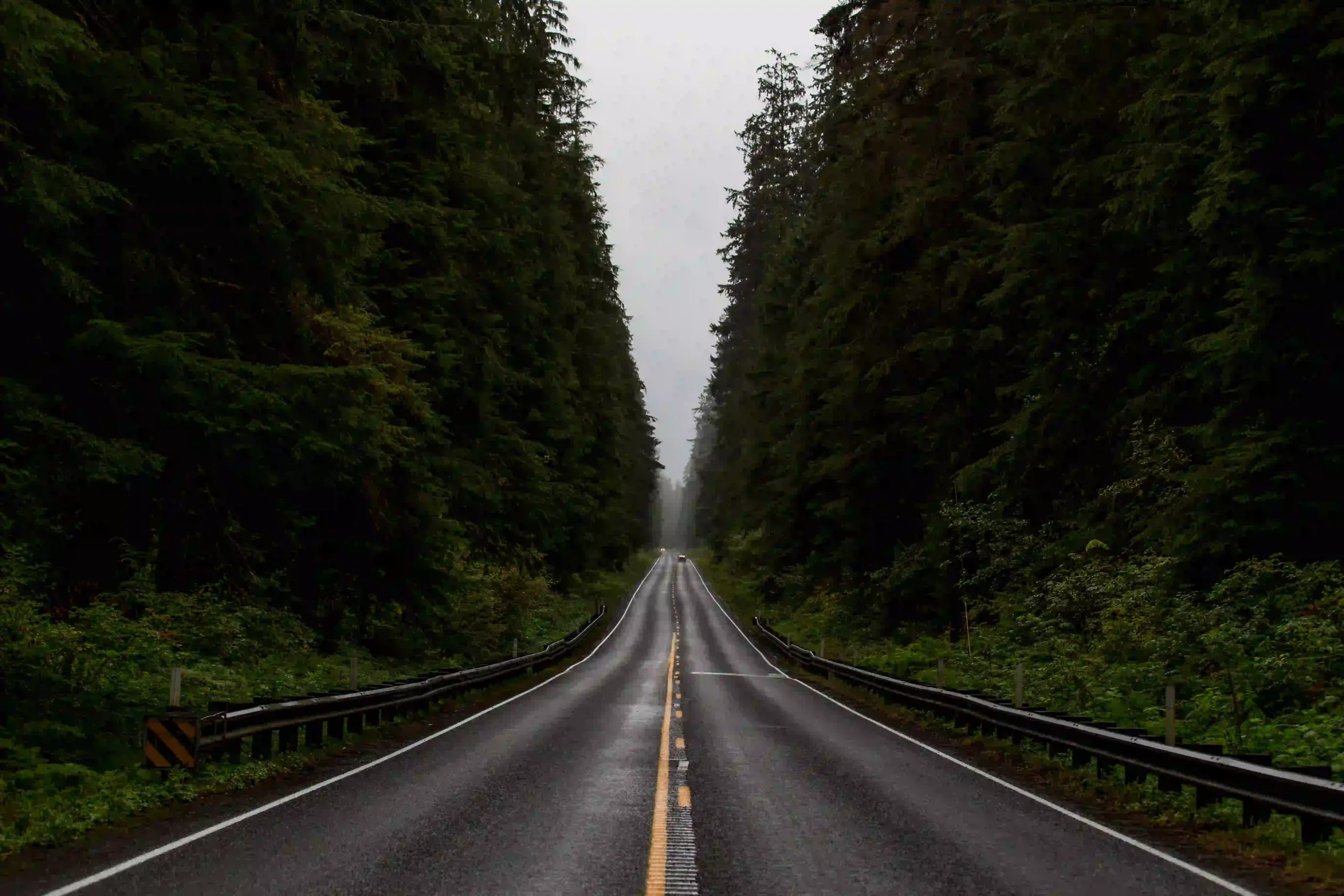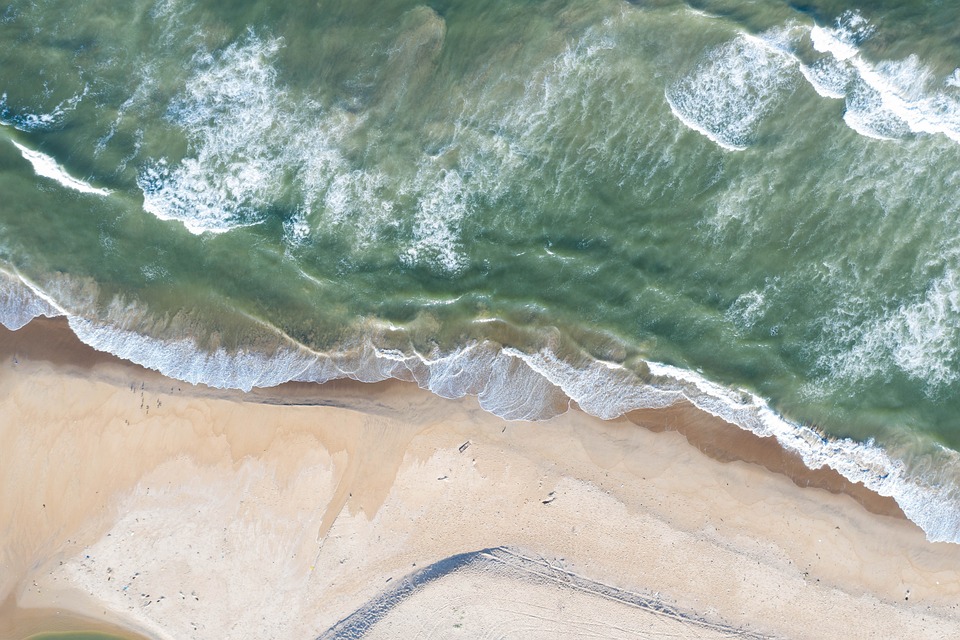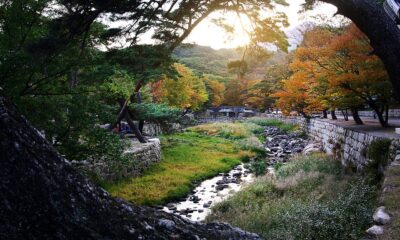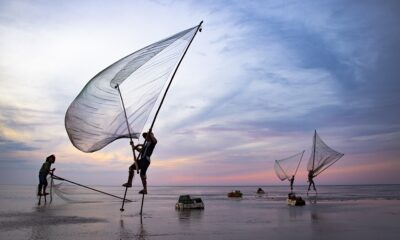Around the World
Exploring the Wonders of the West Coast: A National Park Road Trip Adventure

[ad_1]
Are you ready to embark on an unforgettable journey and explore the wonders of the West Coast? In this article, we will take you on a virtual road trip adventure through some of the most magnificent national parks that the West Coast has to offer. From the rugged coastline of Oregon to the towering redwoods of California, there is no shortage of natural beauty to behold. So, pack your bags, buckle up, and get ready to experience the trip of a lifetime!
What are the top national parks to visit on the West Coast?
One of the top national parks to visit on the West Coast is Olympic National Park in Washington. This diverse park is home to lush rainforests, rugged coastlines, and towering mountains. Visitors can explore the Hoh Rainforest, soak in the natural hot springs at Sol Duc, and marvel at the picturesque views from Hurricane Ridge.
Some highlights of Olympic National Park include:
- Diverse ecosystems: The park is known for its incredible range of precipitation and elevation, which results in a diverse array of ecosystems, including glacier-capped mountains, old-growth temperate rain forests, and over 70 miles of wild coastline.
- Hiking and backpacking: The park offers numerous hiking and backpacking trails that cut through the park’s rainforests and along its Pacific coastline.
- Wildlife viewing: Visitors can spot various wildlife species in the park, including deer, elk, black bears, and marine mammals such as seals, sea lions, and orcas.
- Beaches: The park’s rugged Pacific coastline features a variety of beaches, including pristine stretches of sand and dramatic sea stacks.
- Lakes: The park is home to several beautiful lakes, such as Lake Quinault and Lake Crescent, which offer opportunities for canoeing, kayaking, and paddleboarding.
- Hot springs: Visitors can relax and rejuvenate in the park’s natural hot springs.
- Mount Olympus: The summit of glacier-clad Mt. Olympus is popular with climbers, offering a challenging and rewarding experience for experienced mountaineers.
- Hurricane Ridge: This area offers a peak visitor experience, with stunning views and opportunities for photography.
Olympic National Park is a year-round destination, offering a wide range of outdoor recreational activities and cultural experiences for visitors to enjoy.
Another must-see park is Redwood National and State Parks in California, where you can stand in awe of the ancient, towering redwood trees that have stood for centuries. Crater Lake National Park in Oregon is also not to be missed, with its stunningly blue lake formed from an ancient volcano. These are just a few of the many national parks waiting to be explored on the West Coast.
What activities can I enjoy in these national parks?
Each national park offers a wide range of activities for visitors to enjoy. Hiking is a popular pastime, with trails ranging from easy strolls to challenging multi-day treks. Whether you’re exploring the coastal trails of Olympic National Park, wandering through the old-growth forests of Redwood National Park, or circumnavigating the rim of Crater Lake, there are hiking options for every skill level. Wildlife viewing is another highlight, with the chance to spot everything from whales and sea otters along the coast to elk and black bears in the forests. Birdwatching, camping, and stargazing are also popular activities in these parks.
In Redwood National and State Parks, visitors can enjoy a variety of activities, including:
- Scenic Drives: The parks offer opportunities for scenic drives, allowing visitors to experience the beauty of the redwood forests and the rugged coastline.
- Camping: Camping is a popular activity, providing the opportunity to sleep under the canopy of the iconic redwood trees. There are both developed and backcountry campgrounds to choose from.
- Hiking: The parks feature numerous hiking trails, allowing visitors to explore the old-growth redwood forests and other diverse ecosystems.
- Wildlife Viewing: Visitors can spot a variety of wildlife, including Roosevelt Elk, in the parks.
- Tide-Pooling: The parks offer opportunities for tide-pooling, allowing visitors to explore the marine life in the tide pools along the coastline.
- Whale Watching: Whale watching is another popular activity in the parks, particularly during the appropriate seasons.
In Olympic National Park, visitors can enjoy the following activities:
- Hiking and Backpacking: The park offers numerous hiking and backpacking trails that cut through the rainforests and along the Pacific coastline.
- Wildlife Viewing: Visitors can spot various wildlife species in the park, including deer, elk, black bears, and marine mammals such as seals, sea lions, and orcas.
- Beach Activities: The park’s rugged Pacific coastline features a variety of beaches, including pristine stretches of sand and dramatic sea stacks, offering opportunities for beachcombing and photography.
- Mountaineering: The summit of glacier-clad Mt. Olympus is popular with climbers, offering a challenging and rewarding experience for experienced mountaineers.
- Scenic Drives: The park offers opportunities for scenic drives, allowing visitors to experience the diverse ecosystems and stunning landscapes.
Both parks provide a wide range of outdoor recreational activities and opportunities to experience the natural beauty and diverse ecosystems of the region.
What should I pack for a national park road trip?
Packing for a national park road trip requires careful consideration. Be sure to bring comfortable and sturdy hiking shoes, as well as appropriate clothing layers for varying weather conditions. A reusable water bottle, sunscreen, and insect repellent are essential items for outdoor adventures. Don’t forget your camera to capture the breathtaking scenery and a pair of binoculars for wildlife spotting. If you plan to camp, be sure to pack a tent, sleeping bag, and other camping essentials. Bringing along a detailed map or GPS device is also important for navigation in the parks.
When packing for a national park road trip, it is important to consider the following items:
- Water and Snacks: Bring enough water and snacks to stay hydrated and fueled throughout the day.
- Backpack or Waterproof Bag: Bring a backpack or waterproof bag to keep your belongings safe and distribute weight.
- Phone Charger: Bring a portable or solar phone charger, as power outlets may not be readily available.
- Park Map: Bring a park map to help navigate the park and plan your activities.
- Sunscreen: Bring sunscreen to protect your skin from the sun’s harmful rays.
- Bug Spray: Bring bug spray to protect yourself from pesky bugs.
- Hiking Boots or Comfortable Shoes: Bring comfortable shoes suitable for hiking or walking.
- Layers: Bring layers of clothing to be prepared for changing weather conditions.
- Extra Clothing: Bring extra clothing in case of unexpected weather changes.
- Reusable Water Bottle: Bring a reusable water bottle to reduce waste and stay hydrated.
- Maps and Compass: Bring maps and a compass to help navigate the park.
- First Aid Kit: Bring a first aid kit to be prepared for any injuries or emergencies.
- Binoculars: Bring binoculars to enhance your wildlife viewing experience.
- Protective Hat: Bring a protective hat to protect your face and head from the sun.
- Camera: Bring a camera to capture the stunning landscapes and wildlife.
Remember to pack only the essentials and avoid overpacking to reduce the weight of your luggage. Additionally, check the park’s website for any specific packing recommendations or restrictions.
How can I make the most of my national park road trip?
To make the most of your national park road trip, it’s important to plan ahead and do some research on the parks you will be visiting. Check the park websites for information on trail conditions, park regulations, and any necessary permits. Consider the time of year you will be visiting, as some parks are more crowded during peak seasons. Arrive early in the day to beat the crowds and have a better chance of spotting wildlife. Take advantage of ranger-led programs and guided tours to learn more about the park’s natural and cultural history. And most importantly, take the time to slow down, breathe in the fresh air, and appreciate the natural beauty surrounding you.
To make the most of your national park road trip, consider the following tips:
- Visit early: Plan to arrive at the park between 6 am and 9 am to avoid crowds and have more opportunities for wildlife viewing and photography.
- Plan one big event or major site per day: Focus on one major attraction or hike per day to avoid feeling overwhelmed and to ensure you have time to explore multiple sites.
- Pack a lunch: Bring a packed lunch to stay fueled and avoid the need to drive outside the park to find a meal.
- Expect delays: Be prepared for traffic jams and delays, especially during peak hours or in popular parks.
- Stay on trails and follow guidelines: Respect wildlife, stay on designated trails, and follow national park guidelines to ensure a safe and enjoyable experience.
- Drive safely: Be cautious and patient, especially during inclement weather or in areas with narrow, winding roads.
- Budget for food and lodging: Plan your budget for food, lodging, and gas expenses, considering factors such as the number of people in your group and the distance between parks.
- Plan for time at the Visitor Center: Allocate time to visit the park’s Visitor Center for information, maps, and ranger talks.
- Choose the right accommodation: Consider renting a van or staying in motel for a more comfortable and convenient road trip experience.
- Check social media and park websites: Stay updated on the latest information on openings, camping, and any changes in the parks by checking the National Park Service’s social media and individual park websites.
By following these tips, you can ensure a memorable and enjoyable national park road trip.
Conclusion
Embarking on a national park road trip along the West Coast is a truly magical experience. With its diverse landscapes, stunning natural beauty, and abundance of outdoor activities, there is something for everyone to enjoy. Whether you’re a seasoned hiker, a wildlife enthusiast, or simply someone who appreciates the great outdoors, the national parks of the West Coast have something special to offer. So, start planning your adventure today and get ready to be amazed by the wonders of the West Coast.
FAQs
1. Are there entrance fees for national parks on the West Coast?
Yes, most national parks have an entrance fee, which helps to support the maintenance and preservation of the parks. However, there are also fee-free days throughout the year, so be sure to check the park’s website for more information.
2. Can I bring my pets to national parks?
While some national parks allow pets in certain areas, many have restrictions in place to protect wildlife and ensure visitor safety. Always check the park’s pet regulations before bringing your furry friend along.
3. Are there accommodations within the national parks?
Many national parks offer a range of accommodations, from campgrounds and RV parks to lodges and cabins. Be sure to book your accommodations in advance, as they can fill up quickly during peak seasons.
4. How can I minimize my impact on the environment while visiting national parks?
It’s important to practice Leave No Trace principles while visiting national parks. This includes staying on designated trails, properly disposing of waste, and respecting wildlife and natural resources. Always follow park regulations and be mindful of your impact on the environment.
5. What should I do in case of an emergency while in a national park?
If you find yourself in need of assistance while in a national park, contact a park ranger or dial 911. It’s important to be prepared for emergencies by carrying a first aid kit, food and water, and being aware of your surroundings at all times.
If you liked this blog check out our other articles on :
Explore the Great Outdoors: Things to Do in Banks, Oregon
[ad_2]
Around the World
Navigating Your Trip to Orcas Island: A Complete Travel Guide

[ad_1]
Welcome to our complete travel guide on navigating your trip to Orcas Island! In this article, we will discuss the best things to do, places to visit, and tips for making the most of your time on this beautiful island in the Pacific Northwest.
How do I get to Orcas Island?
Getting to Orcas Island is relatively straightforward. The most common way to reach the island is by ferry from Anacortes, Washington. The ferry ride takes about an hour and offers stunning views of the surrounding water and islands. Be sure to check the ferry schedule in advance and plan accordingly, as reservations are recommended during peak travel times.
If you prefer to fly, there is a small airport on Orcas Island with daily flights from Seattle and other nearby cities. Additionally, you can also reach the island by private boat or seaplane, if that is more convenient for you.
Where should I stay on Orcas Island?
Orcas Island offers a variety of accommodation options to suit every traveler’s needs and budget. From cozy bed and breakfasts to luxury resorts, there is something for everyone on the island. If you prefer a more rustic experience, camping is also available at several state parks and campgrounds.
For a unique and memorable stay, consider renting a cabin or vacation home with stunning waterfront views. These accommodations often provide a more private and secluded experience, perfect for those looking to escape the hustle and bustle of everyday life.
What are the top attractions on Orcas Island?
Orcas Island is known for its natural beauty and outdoor activities. One of the top attractions on the island is Moran State Park, which offers hiking trails, lakes for swimming and boating, and stunning views from the summit of Mount Constitution. Whale watching tours are also popular, as the waters surrounding Orcas Island are home to a variety of marine life.
For those interested in history and culture, be sure to visit the Orcas Island Historical Museum and the historic village of Eastsound. The island also has a thriving arts community, with galleries and shops showcasing local artists and artisans.
What are some tips for exploring Orcas Island?
When exploring Orcas Island, be sure to pack comfortable walking shoes and layers, as the weather can be unpredictable. Consider renting a bike or kayak to explore the island at your own pace, or join a guided tour for a more in-depth experience. Be respectful of the island’s natural beauty and wildlife, and follow Leave No Trace principles to help preserve this special place for future generations.
Lastly, be sure to try some of the local cuisine while on Orcas Island. From fresh seafood to farm-to-table fare, the island offers a variety of dining options to suit every palate.
Conclusion
Exploring Orcas Island is a unique and memorable experience that offers something for everyone. Whether you are interested in outdoor activities, history and culture, or simply relaxing and enjoying the stunning scenery, Orcas Island has it all. With careful planning and an open mind, your trip to Orcas Island is sure to be an unforgettable adventure.
FAQs
Is Orcas Island a good destination for families?
Yes, Orcas Island is a great destination for families! With a wide range of outdoor activities, attractions, and accommodation options, there is something for everyone to enjoy.
Are there grocery stores and other amenities on Orcas Island?
Yes, Orcas Island has grocery stores, restaurants, and other amenities to ensure that your stay is comfortable and convenient.
Can I see whales from the shore on Orcas Island?
While it is possible to see whales from the shore on Orcas Island, your best bet for a close encounter with these majestic creatures is to take a whale watching tour.
What is the best time of year to visit Orcas Island?
The best time to visit Orcas Island depends on your preferences. Summer offers warm weather and outdoor activities, while spring and fall are quieter and more affordable. Winter can be chilly, but offers a peaceful and serene experience on the island.
Are there any annual events or festivals on Orcas Island?
Orcas Island hosts a variety of annual events and festivals, including the Orcas Island Film Festival, the Orcas Island Seafood Festival, and the Doe Bay Music Festival. Be sure to check the event calendar when planning your trip!
[ad_2]
Around the World
Grand Circle Travel Files for Chapter 11 Bankruptcy: What This Means for Customers

[ad_1]
A detailed overview of Grand Circle Travel filing for Chapter 11 bankruptcy and its impact on customers. Exploring what this means for travelers who have booked trips with the company and what steps they can take moving forward.
What is Chapter 11 Bankruptcy?
Chapter 11 bankruptcy is a legal process that allows a company to reorganize its debts and assets in order to stay in business. This type of bankruptcy typically involves creating a plan to repay creditors over time while continuing operations. For Grand Circle Travel, filing for Chapter 11 bankruptcy means that they are seeking protection from creditors while they work on restructuring their finances.
Customers who have booked trips with Grand Circle Travel may be concerned about what this means for their upcoming travel plans and the money they have already paid.
How Does This Affect Customers?
Customers who have booked trips with Grand Circle Travel may be uncertain about the status of their upcoming travel plans. With the company filing for Chapter 11 bankruptcy, there is a potential risk of trip cancellations or disruptions. Customers may also be worried about the possibility of losing the money they have already paid for their trips.
It is important for customers to stay informed about the situation and understand their rights and options moving forward. While the company works on restructuring its finances, customers may need to consider alternative travel plans or seek refunds for their bookings.
What Steps Can Customers Take?
Customers who have booked trips with Grand Circle Travel should first contact the company to inquire about the status of their bookings. It is recommended to keep a record of all communication with the company regarding their travel plans.
If customers are concerned about the possibility of trip cancellations or disruptions, they may want to explore alternative travel options or consider purchasing travel insurance to protect their investment. Customers should also review the terms and conditions of their bookings to understand their rights in the event of bankruptcy.
Can Customers Get Refunds?
Customers who have paid for their trips with Grand Circle Travel may be eligible for refunds depending on the situation. If the company cancels a trip due to the bankruptcy filing, customers may be entitled to a refund of the money they have paid.
Customers should review their booking agreements and contact the company to inquire about refund options. It is also advisable to contact credit card companies or travel insurance providers to explore additional avenues for refunds.
What Does the Future Hold?
As Grand Circle Travel works through the Chapter 11 bankruptcy process, the future of the company and its operations remain uncertain. Customers should stay informed about any updates or changes to the company’s status and be prepared for potential impacts on their travel plans.
It is important for customers to monitor the situation closely, consider their options, and take proactive steps to protect their travel investments. By staying informed and being proactive, customers can navigate the uncertainty caused by the bankruptcy filing.
Conclusion
Grand Circle Travel’s filing for Chapter 11 bankruptcy has raised concerns for customers who have booked trips with the company. It is essential for customers to stay informed about the situation, communicate with the company, and explore their options for refunds or alternative travel plans. By understanding their rights and taking proactive steps, customers can navigate the challenges posed by the bankruptcy filing.
FAQs
1. Will I get a refund if my trip is canceled due to Grand Circle Travel’s bankruptcy?
Customers may be eligible for refunds if their trip is canceled due to the bankruptcy filing. It is recommended to review booking agreements and contact the company to inquire about refund options.
2. Should I purchase travel insurance for my upcoming trip with Grand Circle Travel?
Considering the uncertainty surrounding the company’s finances, purchasing travel insurance may provide additional protection for customers in the event of trip cancellations or disruptions. It is advisable to research different insurance options and consider the coverage they provide.
3. What rights do I have as a customer of Grand Circle Travel in light of the bankruptcy filing?
Customers have rights as consumers, and it is important to review booking agreements and terms and conditions to understand these rights. In the event of bankruptcy, customers may be entitled to refunds or alternative accommodations.
4. How can I stay informed about updates regarding Grand Circle Travel’s bankruptcy?
Customers can stay informed by following news updates, contacting the company directly for information, and monitoring official communications from Grand Circle Travel. It is crucial to remain vigilant and proactive in seeking information about the company’s status.
5. What should I do if I am unable to reach Grand Circle Travel for information about my booking?
If customers are having difficulty reaching the company for information about their bookings, they may consider reaching out to credit card companies or travel insurance providers for assistance. It is important to document all communication attempts and seek guidance from relevant sources.
[ad_2]
Around the World
Discover the Beauty of the West Coast: Your Ultimate National Parks Road Trip Itinerary

[ad_1]
Welcome to your ultimate guide to exploring the stunning beauty of the West Coast through a national parks road trip itinerary. From towering redwoods to enchanting waterfalls, this journey will take you through some of the most iconic and picturesque parks in the United States. Buckle up and get ready to embark on an adventure filled with nature, wildlife, and unforgettable landscapes.
What national parks are included in this road trip itinerary?
On this road trip, you will have the opportunity to visit several breathtaking national parks along the West Coast. Some of the highlights include Yosemite National Park, Sequoia National Park, Kings Canyon National Park, Joshua Tree National Park, and Redwood National and State Parks. Each park offers its own unique beauty and outdoor adventures, making this itinerary a diverse and exciting experience.
At Yosemite National Park, you can marvel at the towering granite cliffs of El Capitan and Half Dome, as well as the cascading waterfalls of Yosemite Valley. Sequoia and Kings Canyon National Parks are home to the largest trees on Earth, the giant sequoias, which stand majestically against the backdrop of the Sierra Nevada mountains. Joshua Tree National Park features rugged rock formations and distinctive Joshua trees, while Redwood National and State Parks are a haven for ancient coast redwoods and lush forests.
What activities can you enjoy in these national parks?
During your road trip through the national parks of the West Coast, you can partake in a variety of outdoor activities that showcase the natural beauty of each destination. Hiking trails of varying difficulty levels offer the chance to explore scenic landscapes, discover hidden waterfalls, and witness wildlife in their natural habitats.
You can also enjoy camping under the stars, stargazing in designated dark sky areas, and taking scenic drives that offer panoramic views of the parks. For the more adventurous traveler, rock climbing, horseback riding, and kayaking opportunities are available in certain parks. Be sure to pack your hiking boots, camera, and sense of adventure for an unforgettable experience.
How long does this road trip itinerary take to complete?
The length of this national parks road trip itinerary can vary depending on how much time you have to spare and how many parks you wish to visit. Ideally, you should allow at least two weeks to fully immerse yourself in the beauty of the West Coast and explore each park at a leisurely pace.
This allows for ample time to hike, camp, and experience the unique attractions of each park without feeling rushed. However, if you are short on time, it is possible to condense the itinerary and visit select parks over a long weekend or a week-long vacation. Regardless of how much time you have, this road trip promises to be a memorable and awe-inspiring journey.
What is the best time of year to embark on this road trip?
The best time to embark on this national parks road trip itinerary is in the spring or fall when the weather is mild, and the parks are less crowded. Spring brings blooming wildflowers, rushing waterfalls, and vibrant greenery, while fall showcases the changing colors of the foliage and cooler temperatures.
Summer can be a popular time to visit the parks, but be prepared for larger crowds and warmer temperatures. Winter offers the opportunity to experience the parks blanketed in snow, but some areas may be inaccessible due to seasonal road closures. Ultimately, the best time to visit the West Coast national parks is when you are able to appreciate the beauty of nature in your own way.
Conclusion
Embarking on a national parks road trip along the West Coast is a once-in-a-lifetime experience that allows you to discover the stunning beauty of some of America’s most cherished landscapes. From towering sequoias to rugged desert terrain, each park offers a unique and unforgettable outdoor adventure that will leave you in awe of the natural world.
Whether you are an avid hiker, wildlife enthusiast, or simply someone who appreciates the beauty of nature, this road trip itinerary has something for everyone. So pack your bags, hit the open road, and get ready to create lasting memories in the great outdoors.
FAQs
1. Can I visit all the national parks in one trip?
While it is possible to visit all the national parks included in this road trip itinerary, it may require ample time and careful planning due to the distance between some of the parks. If time is limited, consider prioritizing select parks that align with your interests and travel goals.
2. Are the national parks pet-friendly?
Some national parks along the West Coast are pet-friendly, allowing leashed pets on designated trails and campgrounds. However, be sure to check the park’s regulations and guidelines regarding pets beforehand to ensure a safe and enjoyable visit for you and your furry friend.
3. What should I pack for a national parks road trip?
When embarking on a national parks road trip, it is essential to pack hiking essentials such as sturdy footwear, breathable clothing, a daypack with snacks and water, sunscreen, a first aid kit, and a map or GPS device. Additionally, bring camping gear if planning to stay overnight in the parks.
4. Are there entrance fees for the national parks?
Most national parks along the West Coast require an entrance fee for visitors, which helps support park maintenance and conservation efforts. Check the National Park Service website for current entrance fees, annual pass options, and fee-free days throughout the year.
5. Can I make campground reservations in advance?
Many national parks offer campground reservations in advance through the park’s website or a designated reservation system. Due to the popularity of certain parks, especially during peak seasons, it is recommended to make campground reservations as early as possible to secure your spot.
[ad_2]
-

 Around the World9 months ago
Around the World9 months agoSmooth Sailing: A Complete Guide to Taking the Ferry from Montreal to Quebec City
-

 Around the World9 months ago
Around the World9 months agoDiscover the Best Tips and Advice for Traveling to St John USVI: A Must-Read Forum for Travelers
-

 Thing To Do9 months ago
Thing To Do9 months agoThe Ultimate Guide to Exploring Route 81 in Virginia: Must-See Attractions and Hidden Gems
-
Around the World11 months ago
The Ultimate Florida Road Trip: A Drive from Fort Lauderdale to Key West
-

 Around the World9 months ago
Around the World9 months agoExploring the Hidden World of Cabo San Lucas Red Light District
-

 popular11 months ago
popular11 months agoExplore Winfield, Kansas: A Guide to The Best Things to See and Do
-

 Beaches11 months ago
Beaches11 months agoUncovering the Hidden Gem: Exploring Pine Island’s Beautiful Beach
-

 Around the World11 months ago
Around the World11 months agoIs It Too Cold to Swim in Bermuda in April? All You Need to Know


















